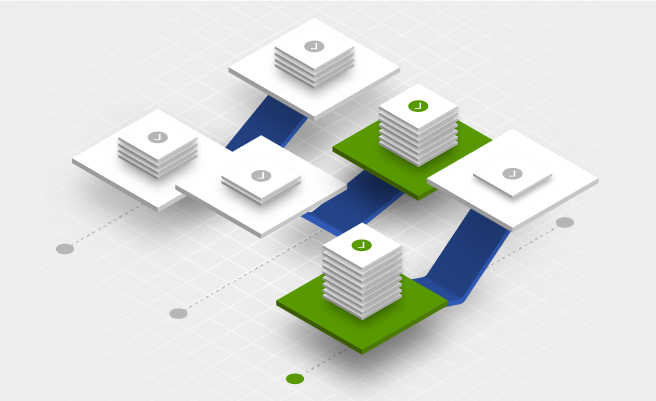- Juni 5, 2019
- 5 min
How to assess your enterprise CMS requirements
Magnolia in Aktion
Unser Expertenteam zeigt Ihnen live, was Magnolia für Sie leisten kann.
Jetzt Demo buchenThere’s no one right way to assess your CMS requirements. However, there are guiding principles and caveats – and mistakes to avoid – if you’re going to choose the right content management system for your organization.
The result of a requirements assessment should be a clear statement of minimum enterprise CMS platform capabilities required to flexibly support marketing and IT for the foreseeable future.
Focus on your business
The first thing to keep in mind is that the assessment process should be highly focused on your company’s unique needs.
Many companies set out to assemble a grand list of CMS features, thinking that if only their list is large enough, they will make the right decision. Unfortunately, this often leads to overpaying for unnecessary features or overlooking important factors like usability.
The right fit between a content management system and your company is as unique as your company itself. The idea that there is some objective “best CMS” platform out there – without reference to your requirements – is misguided. There are different strokes for different folks as the saying goes.
Keep in mind that the flexibility of any technology platform is just as important as its feature-functionality. As a prospective CMS successfully satisfies one use case after another, confidence in the product’s flexibility – so critical for long-term implementation success – will begin to grow.
Selecting a CMS: Common Mistakes & How To Avoid Them
Learn to choose the best CMS for your organization with Magnolia & Priocept’s webinar
Together, these use cases should provide a meaningful and complete-enough set of requirements to put all shortlisted CMS platforms through their paces.
Gather Your Stakeholders
Implementing a new CMS will have wide-ranging impacts on your organization. That’s why it's essential to gather your stakeholders before assessing your requirements and weighing the features you’ll need.
The first set of key stakeholders is the marketing team. They’ll be working with the CMS every day to create impactful digital experiences for your customers. Digital marketers, content authors and sales team members will provide the most relevant input on features like workflows, authoring tools and integrations with a Customer Relationship Management (CRM) system. Most importantly, they’ll know whether the CMS supplements your overall marketing strategy.
The second key stakeholder group is your technology team. From developers to systems administrators, they’ll know best how a potential CMS will fit within your existing infrastructure. They’ll give the most comprehensive feedback on areas like integrations, IT efficiency, reliability and system security.
While there are sure to be others impacted by the system, marketing and IT functions within an organization make these the two most important to get on board.
Weighing features and functionality
Next, it’s useful to think about categories of feature-functionality for both business and technical users. Each category should be scored and assigned weights for every platform under consideration. These ratings shouldn’t be the final determinant in the selection process, but they can effectively reinforce a “right” decision. Categories may include:
● Usability and interface quality
● Content marketing tools
● Interoperability with existing platforms
● Scalability
● Architectural flexibility
● Development frameworks
● Ease of administration
Prepare a Comprehensive Content Management System RFP
As you narrow down options, you'll want to send out a request for proposal (RFP) to the vendors still under consideration. An RFP will help illuminate whether a CMS vendor is capable of meeting your business requirements.
Your RFP should bring together everything from the previous steps for assessing your enterprise's needs. A well-written RFP will give vendors a chance to showcase how they’ll meet the business and stakeholders needs and the richness of the features you need them to deliver on.
One productive assessment exercise is to assemble a comprehensive set of use cases from all of the constituencies who will use the new CMS in any way. Together, these use cases should provide a meaningful and complete-enough set of requirements to put all shortlisted CMS platforms through their paces.
From these use cases, stakeholders should come up with detailed questions to understand if the CMS has the capabilities you need from a marketing standpoint and if the system is feasible for your IT teams to implement. Simple checkboxes for vendors to tick off don’t provide the necessary detail. You want vendors to provide detailed information about their capabilities. You'll also want to ensure the CMS has the support and ongoing training necessary to make the platform useful for your business in the long-term.
While creating an RFP may be a daunting task, it's crucial for making the right CMS migration decision.
Choosing a CMS: The Ultimate Guide
Download this whitepaper to learn more about various CMS options, features to look for and implementation solutions
Try before you buy
It is important to operationalize your requirements by having vendors use their platforms to successfully implement your use cases.
This doesn’t just mean seeing your use cases covered in a demo. It is essential to implement a few of your more critical use cases in proofs-of-concept featuring your top CMS choices. Doing so will help you understand what working with a CMS on a daily basis will be like.
Your experience with a CMS during the PoC should be given higher priority than rankings in third-party research reports. These reports are usually based on secondary information (no actual hands-on testing). While they serve a purpose, how they weigh the importance of particular features and functionality may not be relevant to your business.
A PoC done right should also dissuade you from the temptation to buy a content management system with more than you need. The risk here goes beyond paying for features you won’t use. The amount of resources required to implement and maintain an overly-complex platform can actually stall or kill an implementation – and cost hundreds of thousands of dollars.
Overall, the fundamental guiding principle should be to assess requirements and make purchase decisions based on deep knowledge of your organization, your best effort at assembling technology requirements from broad organizational use cases, and real-world tests of shortlisted CMS platforms in the form of proofs-of-concept.










